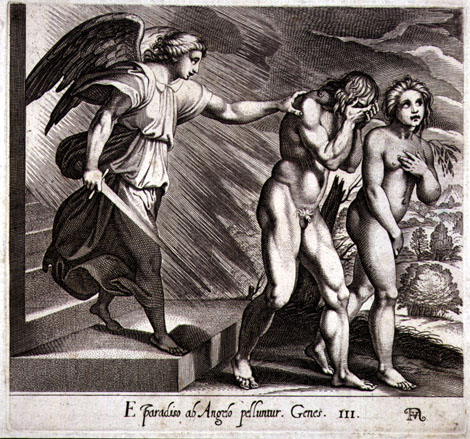The poet’s mode of writing is a very intelligent one here. By setting up a contrast between the real and the ideal, he makes an important point about wildlife conservation. The tiger belongs in the forest. There it can hunt as and when required. It hunts not out of envy or out of hatred, as human beings do, but only as a survival strategy. Humans believe that the tiger is dangerous, but in fact it is humans who are a danger to each other, and the tiger is relatively benign.
It kills deer, it is true, but this maintains the healthy distribution of predators and prey in the ecosystem of the forest. In the wild, the tiger can roam freely. This is a sight that has fascinated photographers for centuries and it is also a sight we lap up when we’re watching a wildlife special on television. Yet we do not hesitate to cage up such an independent creature. We do not think it is degrading to pay to watch such a creature in a jail cell, or even worse, in a circus or a movie set.
The poet’s point is that we should all feel that way. We should return all animals to their natural habitat. We should protect forests. Instead of taking forest lands away for agriculture or industrialisation, we should give these lands back to their original inhabitants. For once, we should stop considering what would spell profit for ourselves, and consider what should spell profit for animals such as the tiger. This is the important message that the poet gives us, and we should all pay heed to it.
Poetic Devices in A Tiger in the Zoo:
Rhyme scheme:
Each of the five stanzas of “A tiger in the Zoo” follows the same simple rhyme scheme – ABCB.
Rhetorical devices:
Personification: This rhetorical device is used to bestow human qualities on something that is not human. In this poem, the poet uses the device of personification with respect to the tiger that is mentioned in the title of the poem. He refers to the tiger not as “it”, but as “he”.
Metaphor: This rhetorical device is used when a covert comparison is made between two different things or ideas. In this poem, the poet uses the device of metaphor in the 3rd line of the 1st stanza when he compares the pads of the tiger’s feet with velvet, since both are soft and smooth to the touch.
Metonymy: This rhetorical device consists of the substitution of the name of an attribute or adjunct for that of the thing meant. In this poem, the poet uses the device of metonymy in the 2nd line of the 4th stanza, he uses the word “strength” to mean the body of the tiger, where the entire strength of this majestic creature resides and which is locked up within a cage in the zoo.
Central Idea of A Tiger in the Zoo:
The poet shows his readers that a tiger is better suited to living in the wild rather than living in a zoo. In the wild, it can roam freely and hunt as and when it requires food. It can approach human habitation and intimidate its inhabitants, but will not harm them unless it is provoked. On the other hand, in the zoo, its radius of movement is very small, it feels like a prisoner in a jail cell, it is fed by the zoo authorities and so it unlearns how to live by itself and is made lazy. It does not appreciate humans coming to look at it. It cannot even sleep at night because it is angry at being caged. All in all, the tiger lives an unnatural and unhappy life in the zoo.
Theme of A Tiger in the Zoo:
Tiger as a proud creature: In this poem, the poet shows how proud a creature the tiger is, and as a consequence, why it should never by caged on zoo premises. In the wild, the tiger hunts its own food all alone and without any help from others of its kind. The stealthy hunting of deer at the water hole may seem cruel, but it is merely a survival strategy. Tigers hunt only when they need to eat. Moreover, this helps to keep the food chain of the forest balanced and thus it keeps the ecosystem healthy as well.
Even when the tiger occasionally strays into human habitation, it only growls at the inhabitants but does not kill them or harm them in any other way unless it is put under extreme provocation. In the zoo as well, the tiger’s pride is noticeable to all. Hundreds of visitors flock to its cage every day, but it ignores them all, roaming about on its own. However, in the reduced space of the cage, it cannot move freely. That is why the poet believes that all tigers should live in the wild and none in the zoo. They are not really a danger to human life, and so they should not be confined.
Conservation of natural habitat: Zoos came up not only as a source of passing entertainment for man, but also because forest lands are now hard to come by. Most of these lands have been cleared for agriculture or industrialisation. As a result, many animals like the tiger have lost their natural habitat and have been forced to live at zoos or travel as part of a circus. However, the poet shows that an animal is always more majestic when seen in its natural habitat rather than in an artificial setting such as a zoo. In doing so, his message to readers is that we should all strive to conserve the natural habitat of the earth’s animal life. We should plant trees and stop the activities of hunters and poachers in order to make forests available and safe for the habitation of animals like the tiger.
Tone of the Poem A Tiger in the Zoo:
The tone of this poem is quite ambiguous. When the poet describes the setting of the zoo, his tone is one of regret because he believes that this is not the kind of life that a tiger should be living. However, there is also a tone of suppressed anger, of the same kind that the tiger feels at being caged. On the other hand, when the poet describes the setting of the forest, the tone is one of admiration and awe at seeing the tiger in its natural habitat. In the last stanza, the tone of regret returns as the poet describes how lack of effort and running ground in the day prevents the tiger from sleeping at night. Only in the last two lines, the tiger’s defiance comes through and the poet makes it seem that the tiger is issuing a challenge to all the worlds (symbolized by the stars in the sky) to produce something as majestic as itself.
Conclusion:
The poet creates a positive resignification of the tiger in this poem. Instead of showing it to be a man-eater or a cruel creature, the poet shows that in fact it hardly ever bothers with human beings and that it hunts only when it needs to eat. By showing these relatively benign aspects of the tiger’s life, and showing how graceful its movement can be, the poet is giving us an important message. He is telling us that it is unjust to remove animals from their natural habitat and that we must strive to conserve that habitat for them at all costs. Hope you enjoyed reading the analysis of A tiger in the zoo. You can also read the summary of A tiger in the zoo here.
Keywords: A Tiger in the Zoo Analysis, A Tiger in the Zoo theme, poetic devices in A Tiger in the Zoo, A Tiger in the Zoo critical appreciation, central idea of A Tiger in the Zoo Analysis
Some online learning platforms provide certifications, while others are designed to simply grow your skills in your personal and professional life. Including Masterclass and Coursera, here are our recommendations for the best online learning platforms you can sign up for today.
The 7 Best Online Learning Platforms of 2022
- Best Overall: Coursera
- Best for Niche Topics: Udemy
- Best for Creative Fields: Skillshare
- Best for Celebrity Lessons: MasterClass
- Best for STEM: EdX
- Best for Career Building: Udacity
- Best for Data Learning: Pluralsight
















